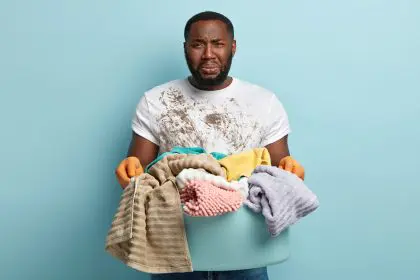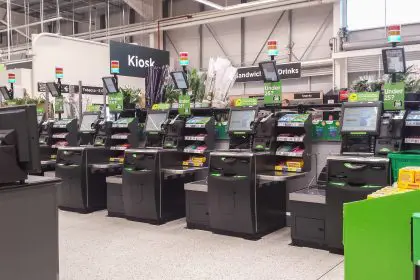The grocery store aisle transforms into an emotional battlefield when you realize your partner’s shopping cart contains items that make your heart race for all the wrong reasons. What should be a routine household task becomes a source of genuine distress, revealing deep differences in spending priorities, health consciousness, and decision-making approaches.
This anxiety isn’t about being controlling or petty. The contents of a shopping cart reflect values, financial awareness, nutritional knowledge, and planning skills. When these fundamental approaches clash, even mundane purchases can trigger intense emotional responses that surprise both partners with their intensity.
Understanding why certain shopping behaviors create anxiety helps couples address underlying concerns rather than arguing about individual purchases. The real issue often extends far beyond whether to buy name brand versus generic products, touching on deeper questions about financial security, health priorities, and shared responsibility.
1. Budget disasters hiding among impulse purchases
Watching your partner casually add expensive items without checking prices can trigger immediate financial panic. Organic produce, premium brands, and specialty products accumulate quickly, transforming a reasonable grocery budget into a financial strain that affects other household expenses.
The anxiety intensifies when you realize your partner seems unaware of running totals or comparative pricing. They might select the first option they see rather than evaluating alternatives, missing opportunities for significant savings that compound over monthly shopping trips.
This pattern becomes particularly stressful when money feels tight. Every unnecessarily expensive choice represents money that could address other needs or build emergency savings. The shopping cart starts looking like a collection of poor financial decisions rather than necessary household purchases.
Some people naturally track spending as they shop, maintaining mental calculations and adjusting selections to stay within budget. Others focus primarily on getting desired items, trusting that reasonable purchases will result in acceptable totals. Neither approach is wrong, but the collision creates genuine stress for budget-conscious partners.
2. Health choices that make no sense
Discovering your partner fills the cart with processed foods, sugary snacks, and nutritionally questionable items can trigger anxiety about shared health goals and family wellness. The disconnect becomes especially jarring when you’ve discussed eating healthier or managing specific health conditions together.
Watching someone bypass fresh produce for convenience foods suggests different priorities around nutrition, meal planning, and long-term health investment. The anxiety stems from feeling like you’re working toward different goals despite sharing meals and health outcomes.
The reverse situation creates equal stress when health-conscious partners fill carts with expensive organic everything, specialty diet products, and supplements that strain budgets without clear benefits. Both extreme approaches can make partners feel misunderstood or judged for their food choices.
These differences often reflect upbringing, knowledge levels, and personal health experiences rather than deliberate disregard for shared wellness. However, the emotional impact remains significant when cart contents suggest fundamental disagreements about self-care and family health priorities.
3. Planning skills that don’t exist
Partners who shop without lists, meal plans, or clear purposes can trigger anxiety in organized individuals who prefer strategic household management. Watching someone wander aisles collecting random items suggests poor planning that leads to food waste, repeated trips, and inefficient spending.
The stress multiplies when impulsive shopping results in missing essential items while accumulating unnecessary purchases. Coming home with exotic ingredients but no basics for planned meals disrupts household routines and creates additional shopping obligations.
Some people thrive on spontaneous shopping, finding inspiration in seasonal produce or sale items that spark creative meal ideas. Others need structured approaches that ensure household needs get met efficiently. Both styles can work independently but create friction when imposed on unwilling partners.
The anxiety often centers on feeling responsible for household planning while watching someone undermine those efforts through disorganized shopping. The mental load of managing household needs feels heavier when partners don’t contribute to systematic maintenance.
4. Brand loyalty that defies logic
Discovering your partner insists on specific brands regardless of price differences or quality comparisons can trigger anxiety about wasteful spending and inflexible thinking. Brand loyalty sometimes reflects genuine quality differences but often stems from childhood habits or marketing effectiveness rather than rational evaluation.
The stress intensifies when expensive brand preferences significantly impact grocery budgets without clear benefits. Paying premium prices for identical products available at lower costs feels financially irresponsible, especially when those savings could address other household needs.
Reverse anxiety occurs when partners choose unfamiliar generic brands that might compromise quality or satisfaction. The fear of wasting money on inferior products that get thrown away outweighs potential savings, creating different but equally valid concerns about smart shopping.
These brand preferences often carry emotional significance beyond practical considerations. Childhood favorites, cultural associations, or quality experiences create loyalty that transcends price comparisons. Understanding these connections helps address underlying values rather than just arguing about individual purchases.
5. Quantity decisions that make no sense
Partners who buy excessive quantities during sales or consistently purchase insufficient amounts can trigger anxiety about waste, storage, and future needs. Bulk buying saves money only when products get used before expiring, but many people struggle with accurate quantity planning.
Watching someone fill the cart with perishables they can’t possibly consume creates stress about food waste and poor resource management. The anxiety multiplies when storage space is limited or when previous bulk purchases expired unused.
Conversely, partners who consistently underestimate needs create stress about frequent shopping trips and missed opportunities for bulk savings. Running out of basics repeatedly suggests poor planning that creates unnecessary inconvenience and expense.
These quantity decisions often reflect different experiences with food security, storage capabilities, and consumption patterns. Some people feel anxious without backup supplies while others feel overwhelmed by excess inventory cluttering their living spaces.
6. Store behavior that embarrasses you
Partners who abandon carts in wrong locations, leave frozen items in regular aisles, or treat stores carelessly can trigger anxiety about public behavior and consideration for others. These actions reflect attitudes about shared spaces and social responsibility that extend beyond shopping habits.
The stress intensifies when partners argue with cashiers, complain loudly about prices, or create unnecessary drama during routine transactions. Public shopping behavior reflects on both partners and can make grocery trips feel socially uncomfortable.
Some people view stores as purely transactional spaces where efficiency matters most, while others see them as community spaces requiring courtesy and consideration. These different approaches create tension when partners feel embarrassed or frustrated by each other’s public behavior.
The anxiety often centers on feeling responsible for a partner’s actions while having no control over their choices. Public shopping becomes stressful when you anticipate potential embarrassment or conflict during routine errands.
7. Decision paralysis that wastes time
Partners who spend excessive time comparing minor options, reading every label, or reconsidering purchases can trigger anxiety in efficiency-focused individuals who prefer quick, decisive shopping trips. What should take thirty minutes stretches into hours of detailed evaluation.
The stress multiplies when indecision affects other scheduled activities or when children become restless during extended shopping sessions. Time spent agonizing over routine purchases feels wasteful when other responsibilities await attention.
However, thorough shoppers often make better long-term decisions, finding superior products, better prices, or healthier options through careful evaluation. Their methodical approach prevents costly mistakes but requires time investment that impatient partners find frustrating.
These timing differences reflect personality types and shopping philosophies rather than character flaws. Some people need quick decisions to manage anxiety while others need thorough evaluation to feel confident about purchases.
8. Communication gaps during shopping trips
Partners who shop silently, make unilateral decisions, or ignore agreed-upon lists can trigger anxiety about teamwork and shared responsibility. Shopping together should feel collaborative rather than like monitoring someone else’s independent decisions.
The stress intensifies when partners split up without coordination, duplicate purchases, or miss essential items because of poor communication. Joint shopping trips become inefficient when coordination breaks down and both people end up frustrated.
Some couples thrive on independent shopping within shared spaces, trusting each other to make reasonable decisions without constant consultation. Others need frequent check-ins and collaborative decision-making to feel comfortable with joint purchases.
The anxiety often stems from feeling excluded from decisions that affect shared resources and household management. Shopping becomes stressful when communication patterns make one partner feel powerless or uninformed about important choices.
Finding peace in grocery store chaos
Managing shopping cart anxiety requires honest communication about underlying concerns rather than criticizing specific purchases. The real issues usually involve financial security, health priorities, time management, or decision-making approaches rather than individual items.
Successful couples develop shopping strategies that honor both partners’ needs and anxieties. This might involve alternating shopping responsibilities, creating detailed shared lists, establishing spending limits, or dividing sections based on individual strengths and preferences.
The goal isn’t eliminating all shopping disagreements but rather understanding why certain behaviors trigger anxiety and finding practical solutions that address those underlying concerns. Shopping cart contents reveal values and priorities that deserve respectful discussion rather than judgment or dismissal.
Most importantly, remember that grocery shopping reflects learned behaviors, childhood experiences, and individual needs rather than character defects. The anxiety is real and valid, but it’s usually addressing deeper relationship dynamics that extend far beyond the produce aisle.













